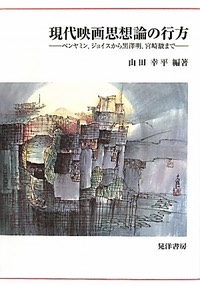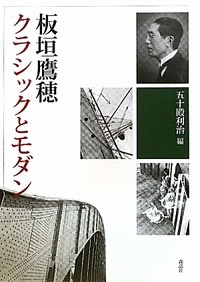I was glad to recently receive in the mail some excellent books on cinema from colleagues in Japan. They represent some of the best work being done on film or image theory, so I wanted to introduce them here.
Gendai eiga shisoron no yukue 現代映画思想論の行方
Edited by Yamada Kohei 山田幸平
Koyo Shobo 晃洋書房, 2010.
This is an anthology featuring some of my colleagues from the Japan Society of Image Arts and Sciences, including Yamada Kohei, Kondo Kojin, Toyohara Masatomo, Nagata Shozo, and Sasagawa Keiko. The book features essays on a wide variety of topics, including Benjamin, Joyce, Okamoto Kihachi, Ozu, Hanada Kiyoteru, Kurosawa Akira, Japanese art animation, Oshii Mamoru, Miyazaki Hayao, Woody Allen, Angelopoulos, Indian mythical cinema, and film music.
You can order it through the Japanese Amazon.
 Eiga to iu tekunoroji keiken 映画というテクノロジー経験
Eiga to iu tekunoroji keiken 映画というテクノロジー経験
By Hase Masato 長谷正人
Seikyusha 青弓社, 2010
This is collection of some of the articles by a good friend at Waseda University, Hase Masato. (He is currently supervising the Japanese translation of my Visions of Japanese Modernity.) It starts with an archaeology of cinema focusing on the Lumiere Brothers and then continues thinking about technology through the films of Yamanaka Sadao, Makino Masahiro, Miyazaki Hayao, Howard Hawks, and Chaplin. Another section focuses on the issue of fiction, first from the perspective of censorship and then through D.W. Griffith. A final section considers the issue of time and memory in Ozu, Coppola, and others.
You can also get this through Amazon.
 Itagaki Takao: Kurashikku to modan 板垣鷹穂 クラシックとモダン
Itagaki Takao: Kurashikku to modan 板垣鷹穂 クラシックとモダン
Edited by Omuka Toshiharu 五十殿利治
Shinwasha 森話社, 2010
This is not strictly a film book, but an anthology on an important Japanese theorist of modern art, Itagaki Takao, who for a time also wrote a lot about cinema as a new machine art. Properly an art historian who specialized in the Renaissance, his visit to Europe in the 1920s prompted him to seriously consider the influence of machines like the motion picture camera on art. His activities went beyond thinking and extended to collaborations with modern photographers like Horino Masao. The essay by Iwamoto Kenji is the only one in the book directly on Itagaki's film writings, but all together the articles provide a fascinating view of an important theorist.
Also get this through the Japanese Amazon.

